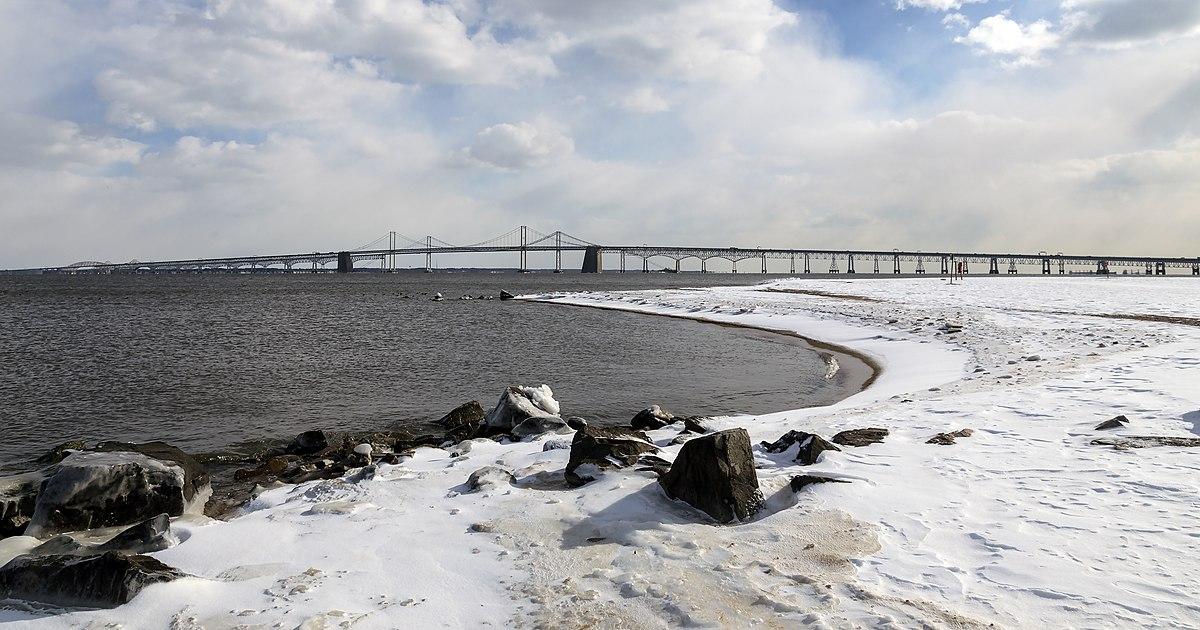Baltimore, Md.—The impacts of congested roads, overdevelopment and farming practices on water quality in the Chesapeake Bay has been well-documented by researchers for decades. What is less understood is how a damaged environment, in turn, shapes human responses. Now, a four-year, $1.4 million grant from the National Science Foundation (NSF) will help researchers and water quality stakeholders predict how changes to environmental quality influence human behavior and policy decisions, and how those decisions impact quality of life throughout the bay.
The project, a collaboration between the University of Maryland Center for Environmental Science (UMCES) and the National Center for Smart Growth Research and Education (NCSG), will use a first-of-its-kind “two-way” modeling loop to demonstrate the interrelationships between human activity, water quality and policy regulations. By establishing how those relationships change under different economic, technological, climactic or political conditions—such as climate change or autonomous vehicles—the researchers will be able to evaluate possible future scenarios for the region.
“We currently have the computational tools we need to predict how human-induced nutrient pollution impacts water quality (e.g., “dead zones”) and living resources in the Chesapeake Bay,” said Principal Investigator and University of Maryland Center for Environmental Science Professor Raleigh Hood. “The revolutionary thing about this project is that it will develop new tools that allow us to predict how degraded water quality impacts human decisions and actions aimed at restoring the Chesapeake Bay.”
Partners on the grant project team include the Chesapeake Bay Program (CBP), The University of Nebraska-Lincoln and Dartmouth College, who offer extensive expertise in agent-based policy modeling and stakeholder management. Their quantitative, policy and regulatory modeling will combine with an existing human-to-built environment modeling suite developed by NCSG and a natural environment modeling suite developed by UMCES to form the two-way modeling loop system.
According to the research team, policy interventions that aim to reduce water pollutants have historically seen limited success, primarily because of the disconnect between policy, environmental impact and the built environment. By using the regulatory feedback loop modeling system to demonstrate the impacts of pollution on quality of life, the researchers can drive more effective policies to target water quality and estuary resilience.
“One thing we have seen is that these policies gain traction when people experience the negative impacts of pollution,” said Hood.
The two-way modeling loop will simulate how technology, policy and economic drivers impact transportation and land use (human-to-built environment), how those outputs impact hydrology, nutrient runoff and water quality (natural system), and how those environmental effects in turn impact policymaking and regulations. The project implements the Chesapeake Bay Total Maximum Daily Load (TMDL) standards, set by the Environmental Protection Agency for the U.S. Clean Water Act, which determine the maximum amount of pollution allowed in bodies of water. The two-way feedback loop will simulate the behavior of local municipalities when TMDL targets are not met, predicting actions they may need to take to satisfy water quality standards, such as best management practices or, in more advanced circumstances, changes in land use, agricultural practices or transportation policies.
“The modeling system will take our built and natural environment modeling and analysis capability to the next level, and will provide a critical tool for decisionmakers that allows them to test various scenarios to improve water quality, and see how changes to factors like land use or transportation affect the entire system,” said NCSG Assistant Research Professor Sevgi Erdogan, a co-PI on the project. “While our primary focus is on water quality, related insights can help create policy changes across the board.”
The team will use the modeling system to explore a variety of plausible future scenarios including variables like climate change, housing development rates, fuel costs and technological advances, to decide how and where best practices and policies must be altered, and how that will impact land use patterns, resources, communities and water quality.
The project builds on a previous collaboration between UMCES and NCSG for the National Socio-Environmental Synthesis Center, which first combined NCSG’s human-to-built modeling suite with UMCES’s natural system modeling suite to examine these complex interactions within the Chesapeake Bay in 2017.
Exploring different future scenarios will help policymakers and planners set strategic policy goals and pinpoint specific high-polluting regions. The team expects that the modeling system will serve as a prototype for shaping effective strategies of other watersheds nationwide.
“Forecasting how these factors relate to and influence each other, particularly in a rapidly changing climate, will be essential for planning a sustainable future,” said Erdogan.
ABOUT THE UNIVERSITY OF MARYLAND CENTER FOR ENVIRONMENTAL SCIENCE: The University of Maryland Center for Environmental Science leads the way toward better management of Maryland’s natural resources and the protection and restoration of the Chesapeake Bay. From a network of laboratories located across the state, our scientists provide sound advice to help state and national leaders manage the environment and prepare future scientists to meet the global challenges of the 21st century. www.umces.edu
ABOUT THE NATIONAL CENTER FOR SMART GROWTH RESEARCH AND EDUCATION: The National Center for Smart Growth is a non-partisan center for research and education on smart growth, sustainability, and related land use issues -- national and international. Located at the University of Maryland, College Park, NCSG conducts research on community and economic development, international planning and urban management, land use, smart cities, and transportation.

